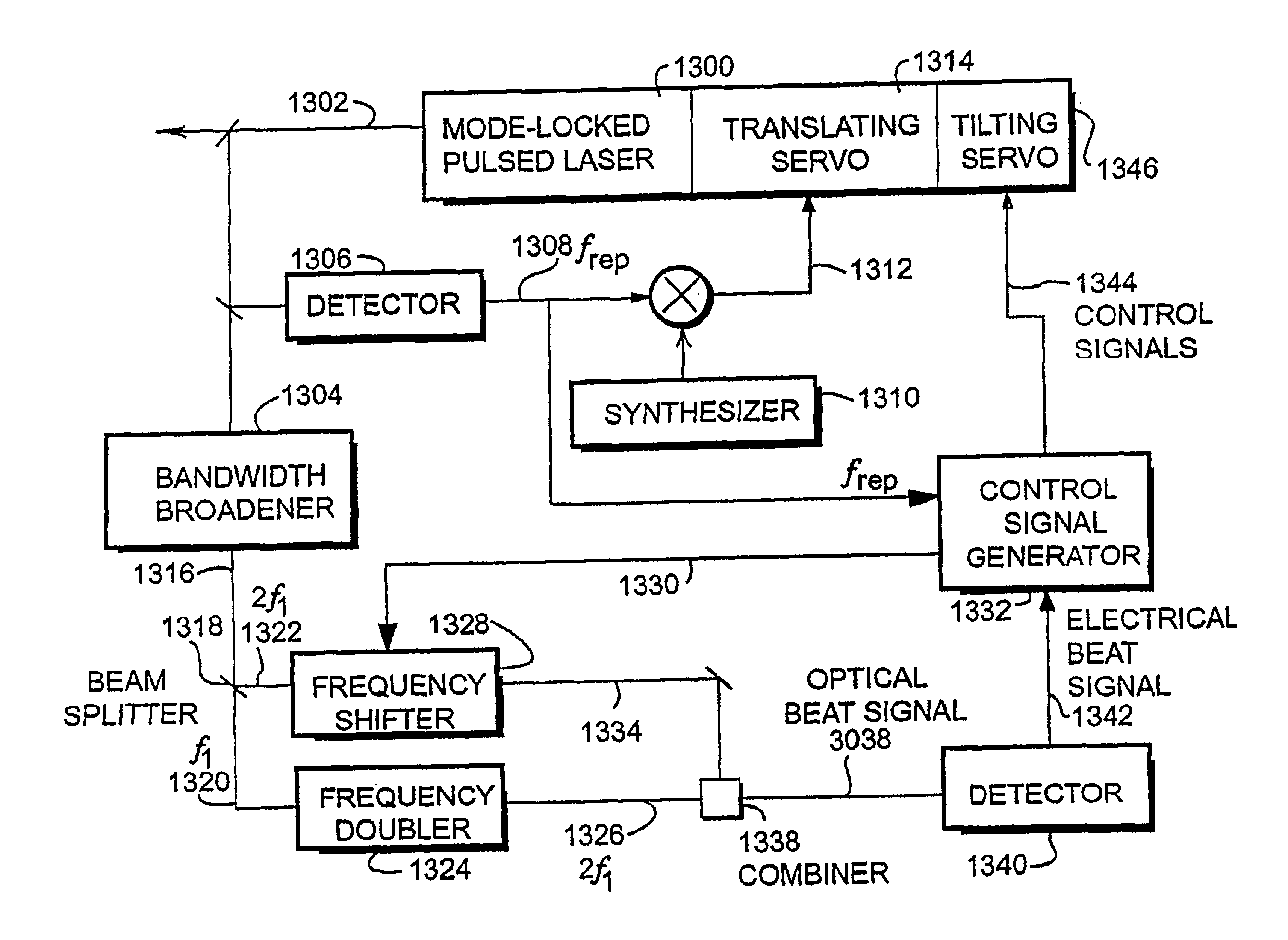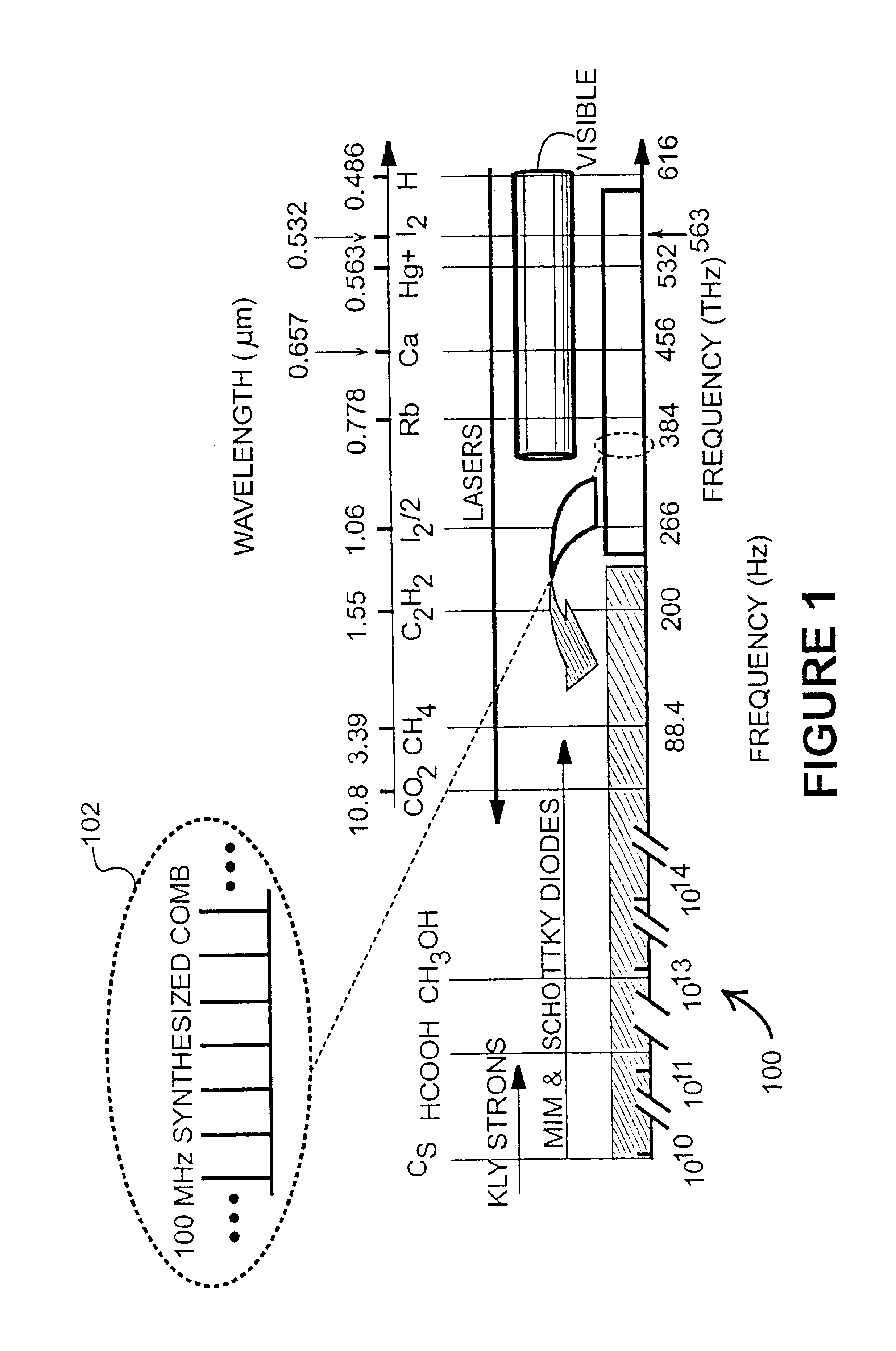Mode-locked pulsed laser system and method
a pulsed laser and modelocked technology, applied in the field of lasers, can solve the problems of physical consequences, rapid dephasing, and techniques that have not utilized active feedback, and achieve the effects of high constant energy values, and relatively inexpensive laser systems
- Summary
- Abstract
- Description
- Claims
- Application Information
AI Technical Summary
Benefits of technology
Problems solved by technology
Method used
Image
Examples
Embodiment Construction
The present invention is based on the use of mode-locked lasers. To understand the present invention, it is therefore important to have a thorough understanding of the operation of mode-locked lasers.
Mode-locked Lasers. The OFCGs described above actually generate a train of short pulses. This is simply due to interference among modes with a fixed phase relationship and is depicted in FIG. 4. FIG. 4 also illustrates the pulse train generated by locking the phase of simultaneous oscillating modes. In the upper panel, the output intensity 400 is illustrated for one mode. In other words, the average intensity of one mode is constant. The intensity of two modes is shown at 402. The intensity of three modes is shown at 404. For a fixed phase relationship for 30 modes interference results in a pulse train 406. For random phases, the interference pattern 408 is illustrated. The mode spacing illustrated in FIG. 4 is 1 GHz.
The first OFCG was built to generate short optical pulses rather than ...
PUM
 Login to View More
Login to View More Abstract
Description
Claims
Application Information
 Login to View More
Login to View More - R&D
- Intellectual Property
- Life Sciences
- Materials
- Tech Scout
- Unparalleled Data Quality
- Higher Quality Content
- 60% Fewer Hallucinations
Browse by: Latest US Patents, China's latest patents, Technical Efficacy Thesaurus, Application Domain, Technology Topic, Popular Technical Reports.
© 2025 PatSnap. All rights reserved.Legal|Privacy policy|Modern Slavery Act Transparency Statement|Sitemap|About US| Contact US: help@patsnap.com



